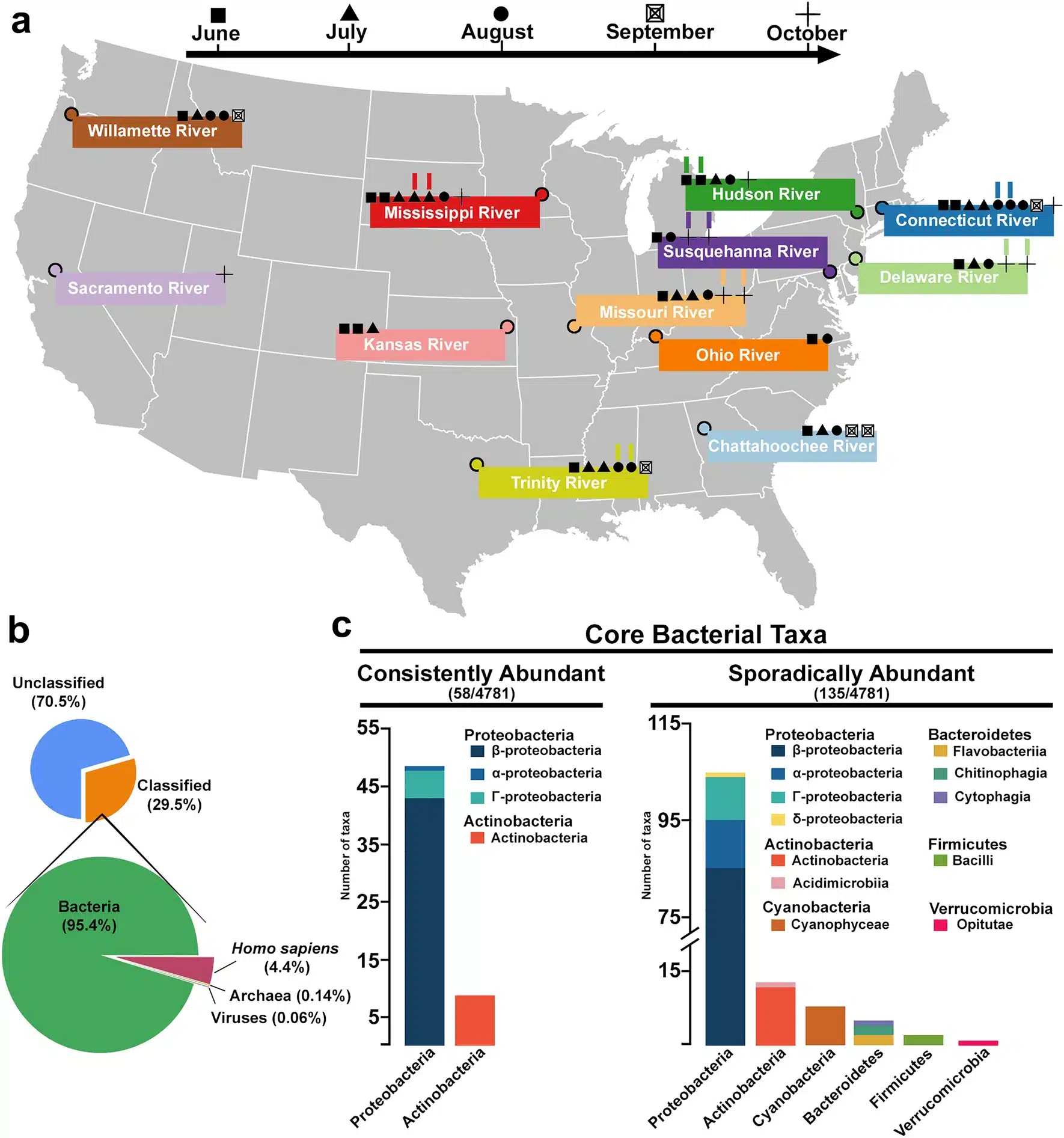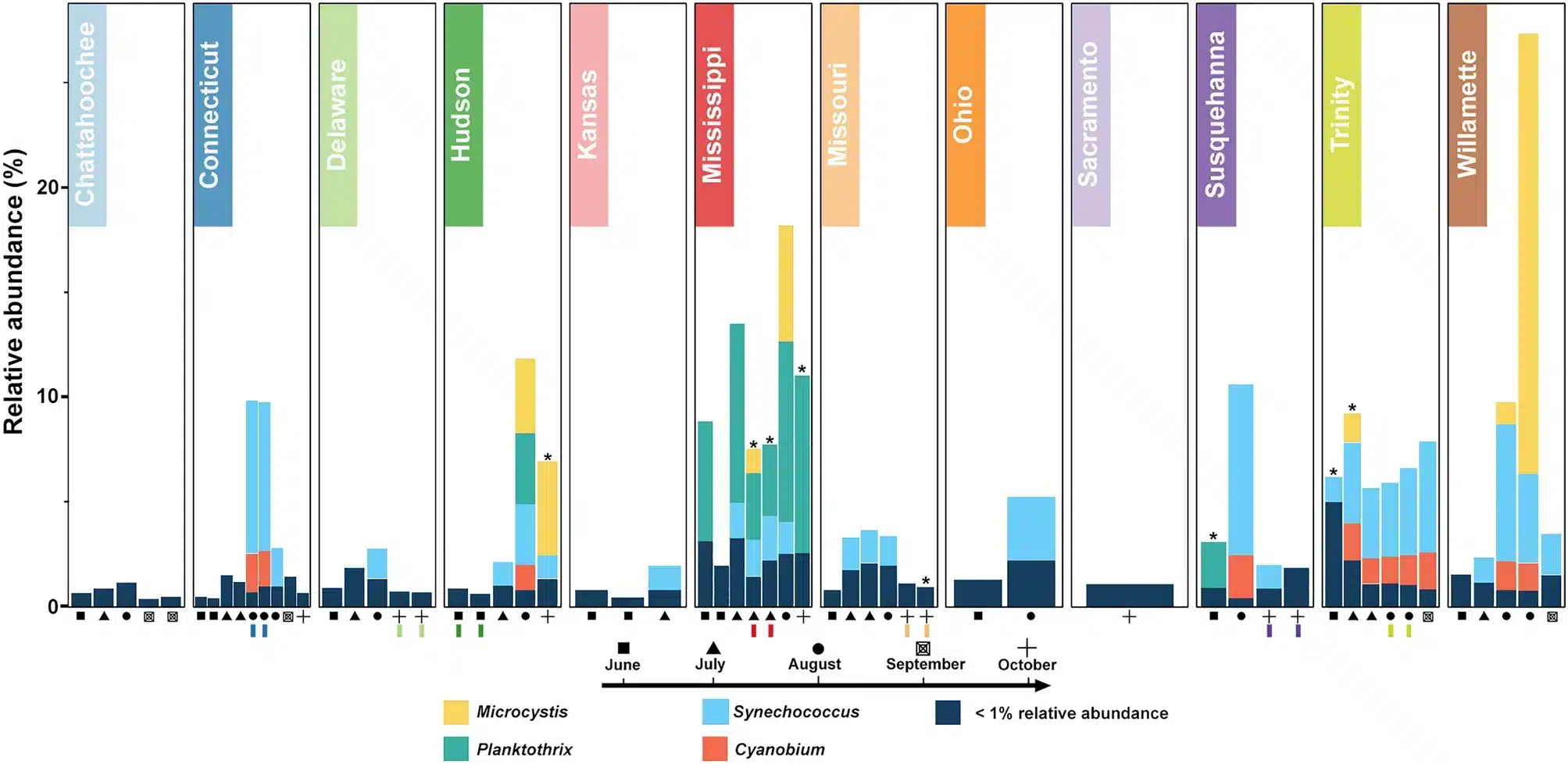Embarking on a journey like never before, a team of scientists turned their eyes to the seemingly tranquil waters of America’s rivers. Started in the summer of 2019, armed with advanced metagenomic sequencing tools, they plunged into the microscopic universe beneath the water’s surface, uncovering an unexpectedly complex and diverse ecosystem. Their main focus? Cyanobacteria – often invisible, yet potent organisms known for their ability to disrupt ecosystems and produce harmful toxins.
Source figure 1: Scientific Reports – Metagenomic mapping of cyanobacteria and potential cyanotoxin producing taxa in large rivers of the United States
Unlike their scientific predecessors, this team dared to take a path less traveled. Instead of focusing on stagnant water bodies such as lakes and ponds, they chose to investigate the flowing waters of rivers. Not just any rivers, but the 12 major rivers of the United States, and not during the height of algal blooms, but during the more serene non-bloom conditions. This fresh approach provided a new angle on the cyanobacterial issue, revealing intriguing facets of these microorganisms.
The unseen residents of our rivers
What they found was astonishing. The rivers teemed with microbial life, exhibiting a taxonomic richness that stood in stark contrast to the more homogenous findings of previous studies. Cyanobacteria often constituted a significant part of aquatic communities. These microscopic beings, some known to produce harmful cyanotoxins, presented a silent threat, going unnoticed until they reached bloom conditions and wreaked havoc on the ecosystem.
Among these cyanobacteria, they found a culprit. Microcystis, a gene known for the production of cyanotoxins, was found to carry a single gene – mcyE – involved in the biosynthesis of microcystin cyanotoxin. This research represents a step towards understanding how microorganisms work and how they can be controlled or reduced in the future.
Echoing past research
Their work paralleled a study conducted by the United States Geological Survey (USGS) that took place from 2010–2017, yet it ventured into uncharted territory. They continued by studying the microbial composition of the cyanobacteria community at a level of detail never seen before. They discovered a strong relationship between cyanobacterial communities and environmental factors such as pH, temperature and dissolved oxygen.Unlike in static water bodies, these variables appeared to have a subdued influence in the dynamic river environments, marking a key difference between lotic (river) and lentic (lake) ecosystems.
New perspectives
Source figure 2: Scientific Reports – Metagenomic mapping of cyanobacteria and potential cyanotoxin producing taxa in large rivers of the United States
Contrary to prior assumptions, the researchers found that the river environment mutes the impact of environmental variables on the cyanobacterial communities, hinting at the unique resilience of these microorganisms. Microcystis and Planktothrix, two cyanobacterial genera capable of producing toxins, showed significant variability across different rivers and times but defied straightforward correlations with environmental factors.
This research represents a wake-up call – the rivers we’ve been overlooking are teeming with cyanobacteria, even those capable of producing harmful toxins. It underscores the importance of intensifying research on these complex and dynamic microbial communities, with the ultimate aim of safeguarding our precious water bodies. These findings serve as a reminder: Beneath the serene surface of our rivers lurks an unseen world, teeming with life and potential challenges, that we are only just beginning to understand.


